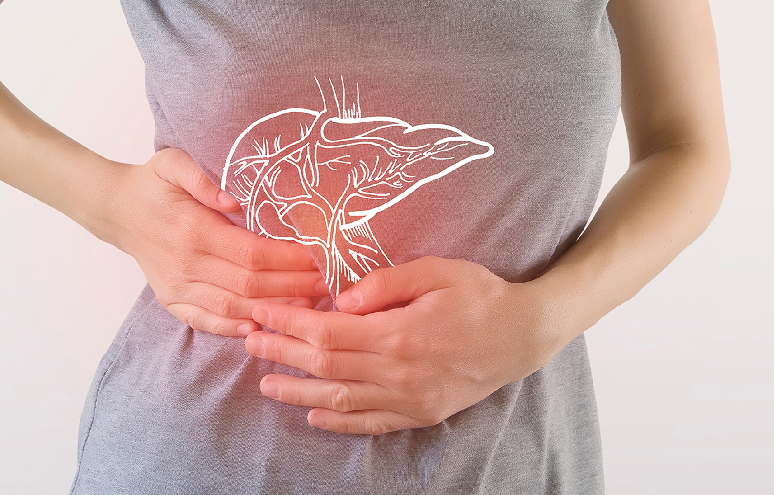Liver Cirrhosis Treatment in Pune & PCMC - Dr. Sharan Narute

Liver Cirrhosis
Liver cirrhosis represents the advanced stage of progressive liver disease, where normal, healthy liver tissue is replaced by scar tissue (fibrosis). This scarring disrupts the liver’s ability to function properly, affecting essential processes like detoxification, metabolism, and nutrient storage.
Cirrhosis is a chronic condition in which the liver becomes permanently damaged and scarred. As scar tissue builds up, it restricts blood flow and hampers liver function. Over time, this can lead to liver failure and life-threatening complications.
If you or a loved one are facing signs of liver damage, early intervention is critical. Consult Dr. Sharan Narute – Liver Specialist in Pimpri Chinchwad, for expert diagnosis, guidance, and advanced treatment options tailored to your condition.
Causes
Liver cirrhosis is the result of long-term, continuous liver damage from a variety of underlying health conditions. Over time, this damage leads to the formation of scar tissue, which replaces healthy liver cells and affects liver function. Several chronic liver diseases and lifestyle factors contribute to the development of cirrhosis:
Chronic Hepatitis B and C Infections: Long-standing viral infections can inflame and damage liver tissue over time, leading to fibrosis and eventually cirrhosis.
Excessive Alcohol Consumption: Prolonged alcohol abuse is one of the most common causes of cirrhosis. It disrupts liver metabolism and promotes fatty changes and inflammation in the liver.
Non-Alcoholic Fatty Liver Disease (NAFLD): Fat buildup in the liver unrelated to alcohol intake can progress to non-alcoholic steatohepatitis (NASH), which causes inflammation and scarring.
Autoimmune Hepatitis: This condition occurs when the body’s immune system attacks liver cells, resulting in inflammation and chronic damage.
Prolonged Exposure to Toxins or Medications: Certain drugs, environmental toxins, and long-term medication use can be harmful to the liver, increasing the risk of cirrhosis.
Genetic Conditions: Disorders like Wilson’s disease and hemochromatosis, which affect the way the body processes certain minerals, can also cause liver damage.
Understanding the root cause is crucial for determining the most effective treatment approach and preventing further liver damage.
Symptoms
Cirrhosis often develops slowly, and symptoms may not be noticeable in the early stages. However, as the liver becomes more scarred and its function deteriorates, a variety of signs and symptoms may appear:
Chronic fatigue and weakness, often accompanied by reduced stamina
Easy bruising or bleeding, due to the liver’s impaired ability to produce clotting factors
Jaundice – a yellowing of the skin and eyes caused by the liver’s reduced ability to process bilirubin
Ascites – fluid buildup in the abdominal cavity, causing discomfort and swelling
Edema – swelling in the legs, ankles, and feet due to fluid retention
Loss of appetite and weight loss, sometimes with nausea and vomiting
Confusion or memory problems (hepatic encephalopathy), as toxins build up in the brain
Itchy skin and spider angiomas – small, web-like blood vessels visible on the skin
Dark-colored urine and pale stools
The presence and severity of these symptoms vary, depending on the stage and underlying cause of the disease.
Treatment
While cirrhosis is generally irreversible, early diagnosis and appropriate treatment can significantly improve symptoms, prevent complications, and slow disease progression.
1. Lifestyle Modifications
Stop alcohol completely if alcohol is the underlying cause.
Maintain a balanced diet rich in fruits, vegetables, and lean proteins while avoiding processed foods.
Exercise regularly to support overall liver health and maintain a healthy weight.
Avoid unnecessary medications or supplements that may further burden the liver.
2. Medications
Diuretics to manage fluid retention (ascites and edema)
Beta-blockers to reduce the risk of variceal bleeding
Lactulose to treat hepatic encephalopathy
Antivirals or immunosuppressants, depending on the cause (e.g., hepatitis B/C, autoimmune hepatitis)
3. Monitoring and Regular Checkups
Ongoing evaluation for liver function and possible complications like liver cancer
Endoscopy to check for varices in patients at risk of bleeding
Imaging studies and blood tests to monitor disease progression
4. Liver Transplantation
In cases of advanced cirrhosis where the liver is severely damaged and no longer functional, liver transplantation becomes the only viable treatment option. A successful transplant can greatly improve quality of life and survival chances.
Early diagnosis and intervention are key to managing liver cirrhosis effectively. If you’re experiencing any symptoms or have risk factors, it is essential to consult an experienced liver specialist for timely evaluation and care.
